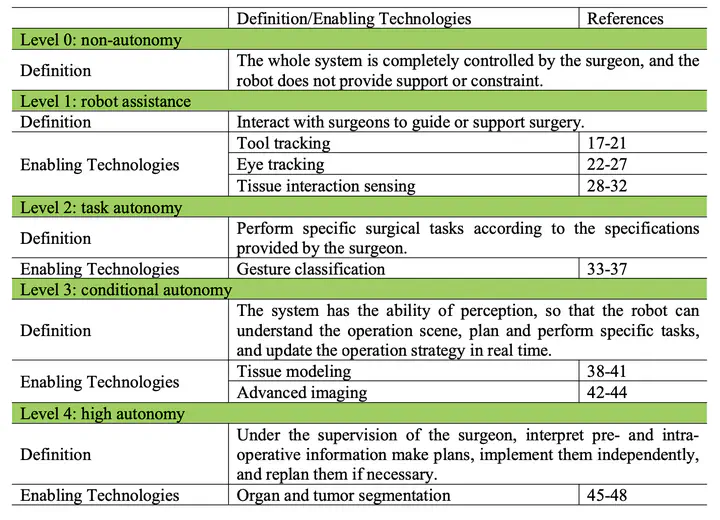 Image credit: Unsplash
Image credit: Unsplash
Abstract
With the increasing demand for soft and smart robotic technology for surgical applications, there have been growing interests in the development of controllers. Modern developments in the design process of surgical robots are being fundamentally different from traditional robots. There is a huge design gap with a lack of a unified and systematic framework for the design process, analysis, and control for these high-dimensional robots. On the other hand, more and more surgical robots have been developed, which has greatly impacted medical practice. This review paper attempts to provide an insight into various control strategies such as PID control, model predictive control, and sliding mode control along with basic structures of different autonomy level surgical robot control systems as a guideline for the clinical application of surgical robot in the futures. A comprehensive assessment by highlighting the limitations and design gaps of various control strategies is reported for future application.